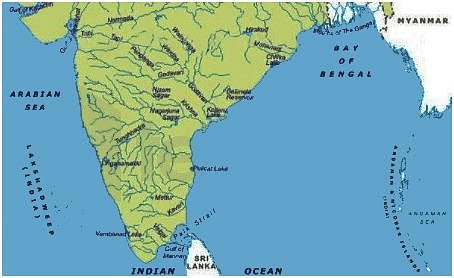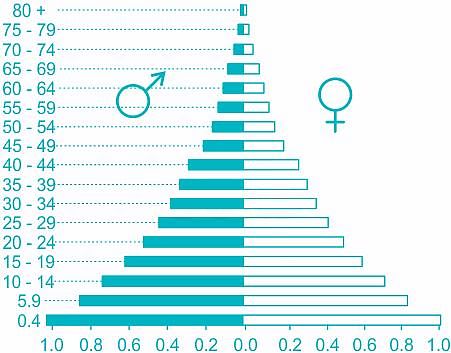KVS PGT/TGT/PRT Exam > KVS PGT/TGT/PRT Tests > KVS TGT Exam Mock Test Series 2024 > KVS TGT Social Science Mock Test - 2 - KVS PGT/TGT/PRT MCQ
KVS TGT Social Science Mock Test - 2 - KVS PGT/TGT/PRT MCQ
Test Description
30 Questions MCQ Test KVS TGT Exam Mock Test Series 2024 - KVS TGT Social Science Mock Test - 2
KVS TGT Social Science Mock Test - 2 for KVS PGT/TGT/PRT 2025 is part of KVS TGT Exam Mock Test Series 2024 preparation. The KVS TGT Social Science Mock Test - 2 questions and answers have been
prepared according to the KVS PGT/TGT/PRT exam syllabus.The KVS TGT Social Science Mock Test - 2 MCQs are made for KVS PGT/TGT/PRT 2025 Exam. Find important
definitions, questions, notes, meanings, examples, exercises, MCQs and online tests for KVS TGT Social Science Mock Test - 2 below.
Solutions of KVS TGT Social Science Mock Test - 2 questions in English are available as part of our KVS TGT Exam Mock Test Series 2024 for KVS PGT/TGT/PRT & KVS TGT Social Science Mock Test - 2 solutions in
Hindi for KVS TGT Exam Mock Test Series 2024 course. Download more important topics, notes, lectures and mock
test series for KVS PGT/TGT/PRT Exam by signing up for free. Attempt KVS TGT Social Science Mock Test - 2 | 180 questions in 180 minutes | Mock test for KVS PGT/TGT/PRT preparation | Free important questions MCQ to study KVS TGT Exam Mock Test Series 2024 for KVS PGT/TGT/PRT Exam | Download free PDF with solutions
KVS TGT Social Science Mock Test - 2 - Question 1
'Jade' is related to 'Green' in the same way as 'Garnet' is related to:
Detailed Solution for KVS TGT Social Science Mock Test - 2 - Question 1
KVS TGT Social Science Mock Test - 2 - Question 2
Direction: Study the following question carefully and choose the right answer.
If REASON is coded as 5 and BELIEVED as 7, then what is the code for GOVERNMENT?
Detailed Solution for KVS TGT Social Science Mock Test - 2 - Question 2
KVS TGT Social Science Mock Test - 2 - Question 3
How to remove the unwanted action from recorded macro without recording the whole macro again?
Detailed Solution for KVS TGT Social Science Mock Test - 2 - Question 3
KVS TGT Social Science Mock Test - 2 - Question 4
Which of the following strategy is related to the development of post adolescence in improving the classroom teaching learning interactions ?
Detailed Solution for KVS TGT Social Science Mock Test - 2 - Question 4
Detailed Solution for KVS TGT Social Science Mock Test - 2 - Question 5
KVS TGT Social Science Mock Test - 2 - Question 6
The Field Theory of Learning places primary emphasis upon:
Detailed Solution for KVS TGT Social Science Mock Test - 2 - Question 6
KVS TGT Social Science Mock Test - 2 - Question 7
A sudden solution is a rule. "Once the solution has appeared, it can be repeated immediately the next time the problem is confronted", in which of the following theory of learning?
Detailed Solution for KVS TGT Social Science Mock Test - 2 - Question 7
KVS TGT Social Science Mock Test - 2 - Question 8
Which one of the following activities would NOT be consistent with a constructivist environment?
Detailed Solution for KVS TGT Social Science Mock Test - 2 - Question 8
KVS TGT Social Science Mock Test - 2 - Question 9
In the classroom context when words are associated with picture or meaning in language learning, it is an example of:
Detailed Solution for KVS TGT Social Science Mock Test - 2 - Question 9
KVS TGT Social Science Mock Test - 2 - Question 10
What measures should be adopted for forming learning communities and ensuring their smooth functioning?
Detailed Solution for KVS TGT Social Science Mock Test - 2 - Question 10
KVS TGT Social Science Mock Test - 2 - Question 11
To impart democratic education in school, a teacher should not
Detailed Solution for KVS TGT Social Science Mock Test - 2 - Question 11
KVS TGT Social Science Mock Test - 2 - Question 12
With regard to the French Revolution, which among the following had reworked the sovereign nation-state by redefining the idea of freedom from the bondage into a movement?
Detailed Solution for KVS TGT Social Science Mock Test - 2 - Question 12
KVS TGT Social Science Mock Test - 2 - Question 13
Which one of the following is not the local term for "Swidden agriculture" in India?
Detailed Solution for KVS TGT Social Science Mock Test - 2 - Question 13
KVS TGT Social Science Mock Test - 2 - Question 14
Which of the following revolution was based on Marxism ideology?
Detailed Solution for KVS TGT Social Science Mock Test - 2 - Question 14
KVS TGT Social Science Mock Test - 2 - Question 15
Who wrote the Declaration of the Rights of Woman and of the Female Citizen?
Detailed Solution for KVS TGT Social Science Mock Test - 2 - Question 15
KVS TGT Social Science Mock Test - 2 - Question 16
Which of the following country was the first to undergo industrial revolution?
Detailed Solution for KVS TGT Social Science Mock Test - 2 - Question 16
KVS TGT Social Science Mock Test - 2 - Question 17
India is a peninsula because it is surrounded by water on ______ sides.
Detailed Solution for KVS TGT Social Science Mock Test - 2 - Question 17
KVS TGT Social Science Mock Test - 2 - Question 18
Which of the following statement is not correct related to the La-Nina?
Detailed Solution for KVS TGT Social Science Mock Test - 2 - Question 18
Detailed Solution for KVS TGT Social Science Mock Test - 2 - Question 19
Detailed Solution for KVS TGT Social Science Mock Test - 2 - Question 20
Detailed Solution for KVS TGT Social Science Mock Test - 2 - Question 21
KVS TGT Social Science Mock Test - 2 - Question 22
The President of India has same powers and functions as ______.
Detailed Solution for KVS TGT Social Science Mock Test - 2 - Question 22
KVS TGT Social Science Mock Test - 2 - Question 23
In the Indian political system, the real executive power is vested in _________.
Detailed Solution for KVS TGT Social Science Mock Test - 2 - Question 23
Detailed Solution for KVS TGT Social Science Mock Test - 2 - Question 24
Detailed Solution for KVS TGT Social Science Mock Test - 2 - Question 25
KVS TGT Social Science Mock Test - 2 - Question 26
Natural process of production comes under which one of the following ?
Detailed Solution for KVS TGT Social Science Mock Test - 2 - Question 26
KVS TGT Social Science Mock Test - 2 - Question 27
________ by the Government of the country makes money acceptable as a medium of exchange.
Detailed Solution for KVS TGT Social Science Mock Test - 2 - Question 27
KVS TGT Social Science Mock Test - 2 - Question 28
The rate at which RBI lends to commercial banks for the short term is called ________.
Detailed Solution for KVS TGT Social Science Mock Test - 2 - Question 28
KVS TGT Social Science Mock Test - 2 - Question 29
When was the Reserve Bank of India established?
Detailed Solution for KVS TGT Social Science Mock Test - 2 - Question 29
Detailed Solution for KVS TGT Social Science Mock Test - 2 - Question 30
View more questions
Information about KVS TGT Social Science Mock Test - 2 Page
In this test you can find the Exam questions for KVS TGT Social Science Mock Test - 2 solved & explained in the simplest way possible.
Besides giving Questions and answers for KVS TGT Social Science Mock Test - 2, EduRev gives you an ample number of Online tests for practice















